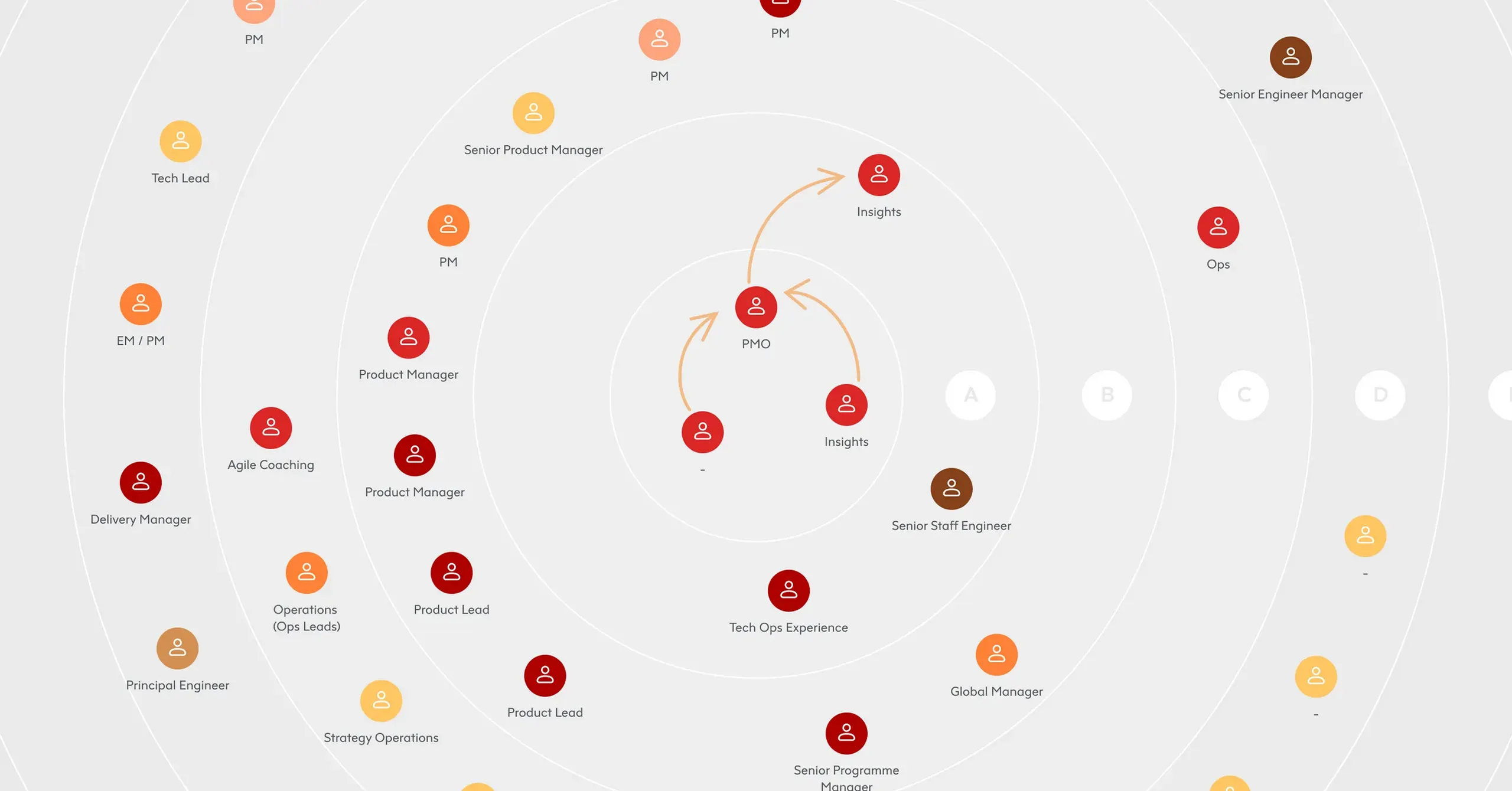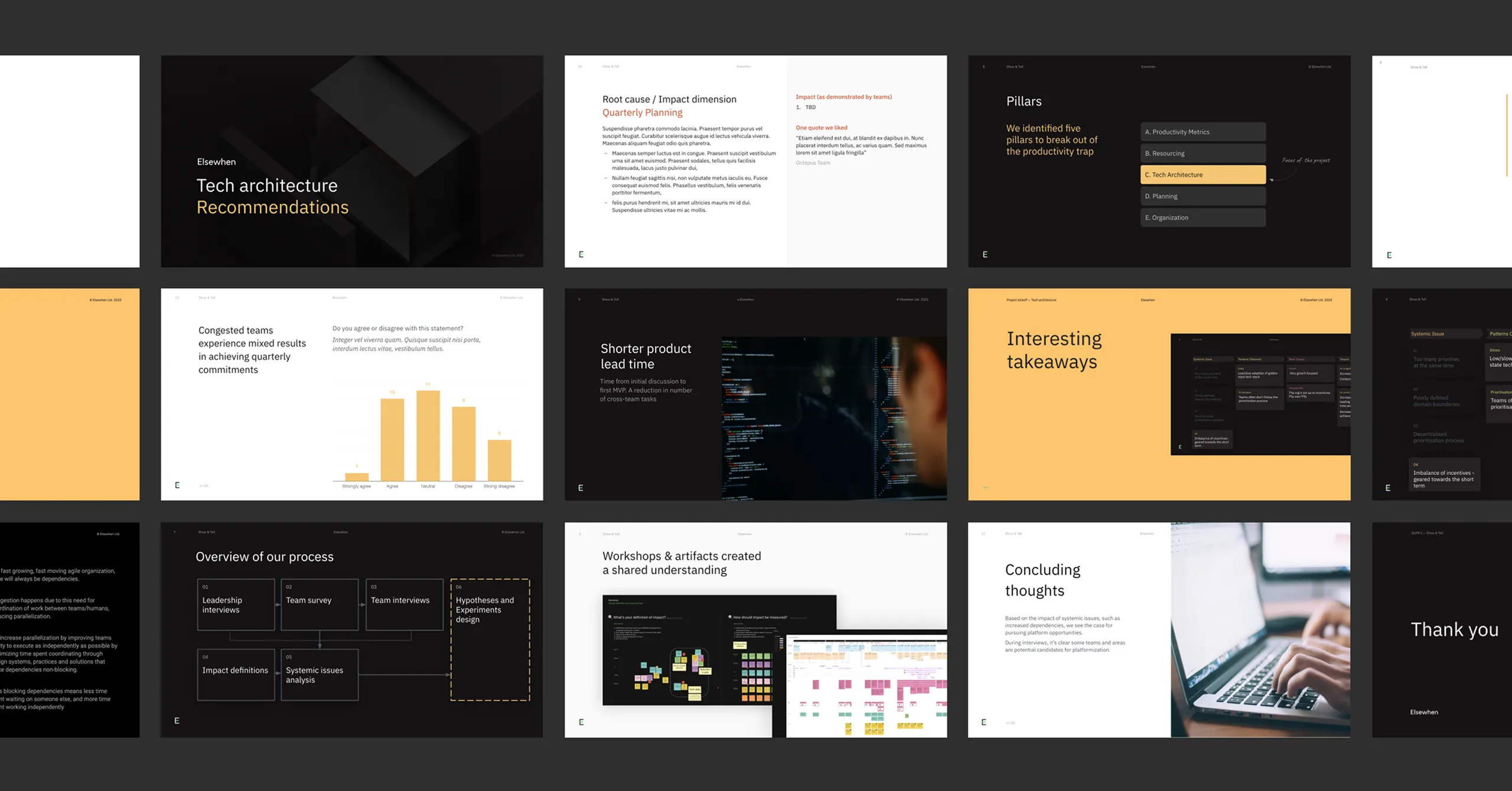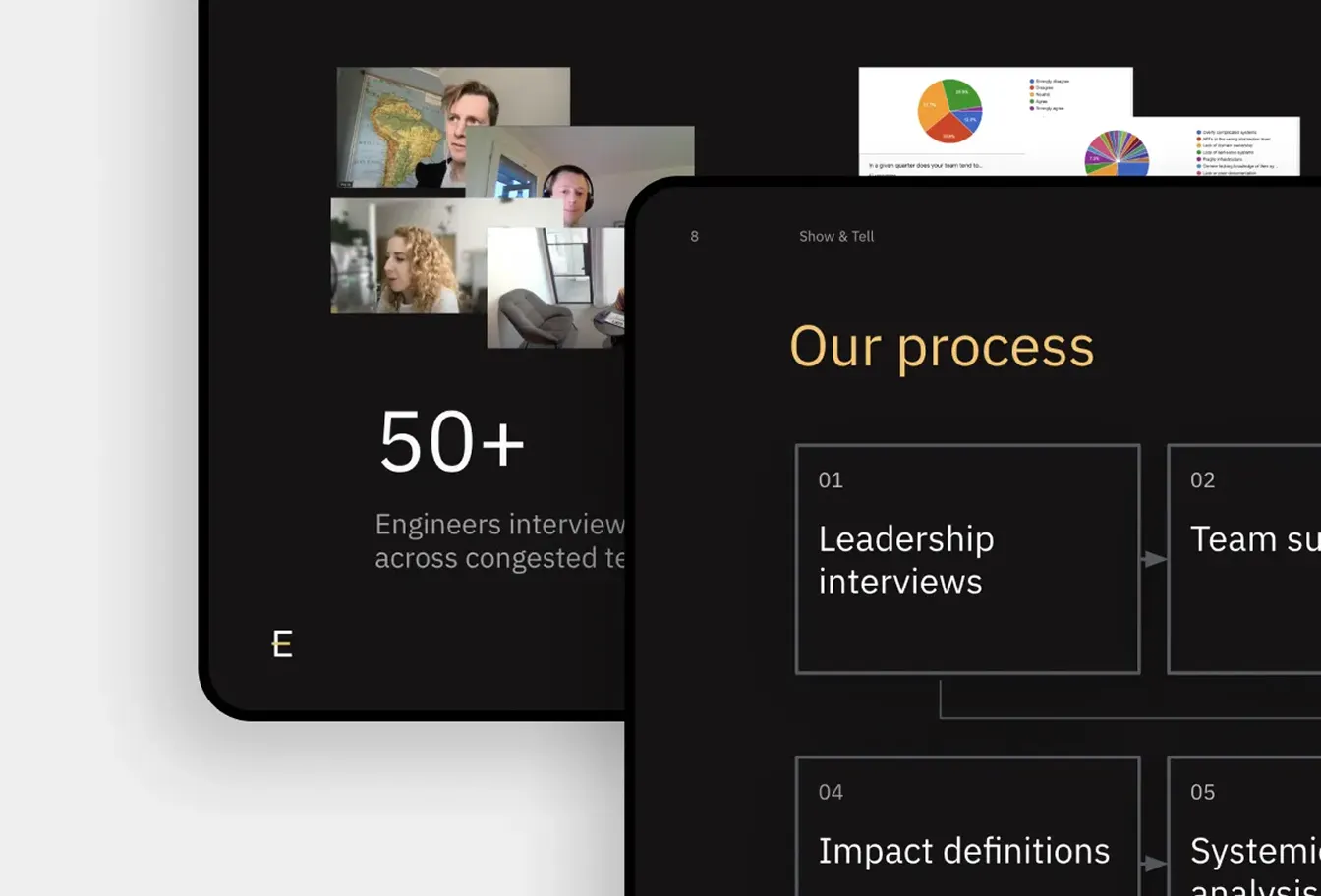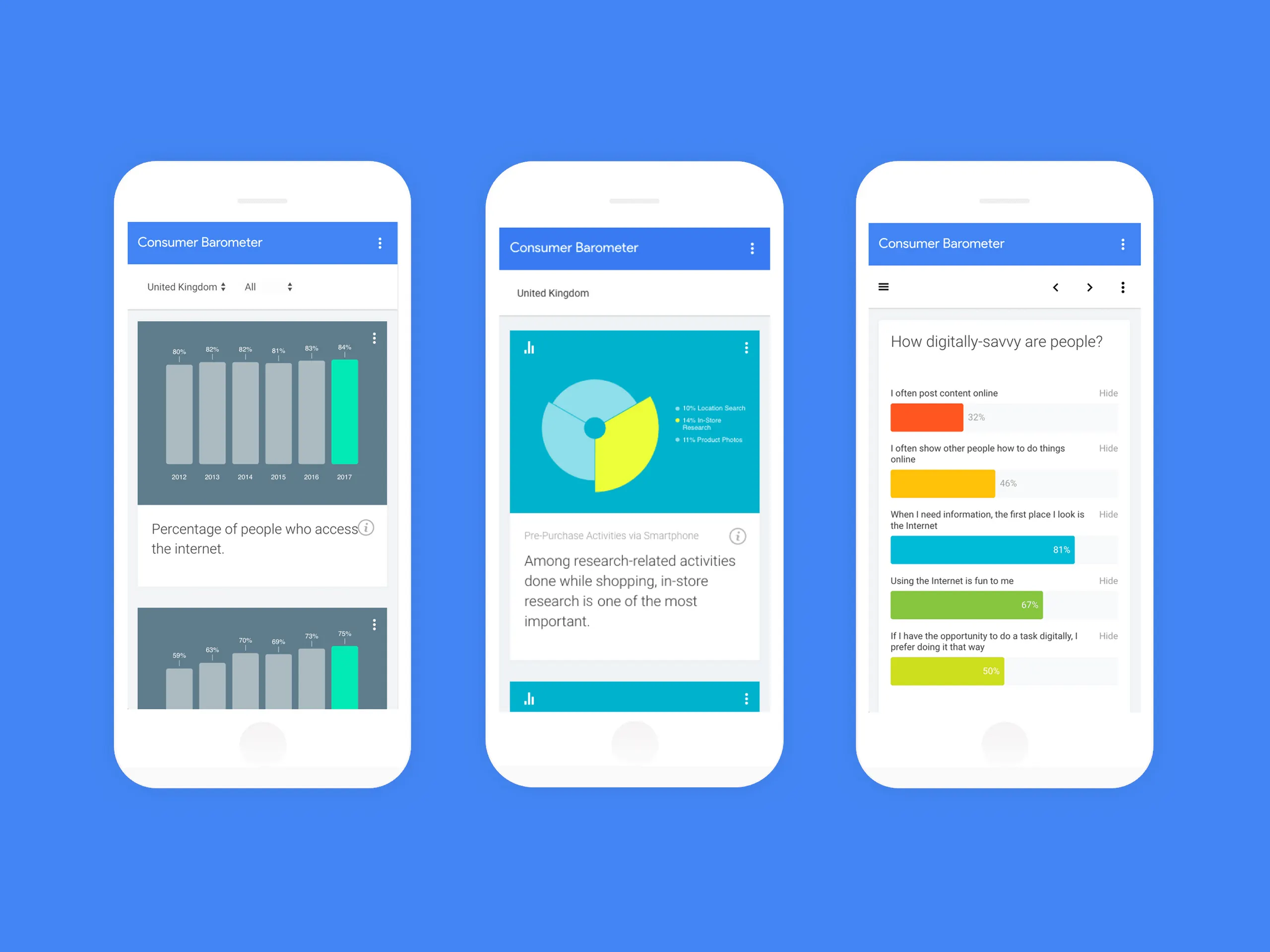
Overview
Our client prioritises speed and innovation. They have a team of 4,000+ engineers, with hundreds of squads managing microservices and data pipelines. However, some teams are overloaded.
Elsewhen conducted research, identifying the root causes of team congestion. We proposed solutions and experiments using technology and new methods of working. Our solutions will maintain productivity, alleviate congestion, and support doubling engineering headcount in three years.
We surveyed and interviewed 250+ employees using qualitative and quantitative research to identify workflow hindrances that cause longer time-to-market for strategic initiatives.
We designed a blueprint to address throughput issues, improving our understanding of bottlenecks and providing strategic workflow recommendations.

Overcoming blockages that restrict team productivity
The rapidly scaling business wanted its teams to retain the agility and speed of a startup. It was evident that as the number of employees grew, the more coordination would be required, leading to further bottlenecks.
However, the company’s initial hypotheses and assumptions needed further analysis and validation before they could invest in solutions. They asked us to conduct research into their working practices and tech architecture – to better understand their barriers to execution.
Our research focused on their most congested teams, and those with the most technical dependencies. We interviewed these teams to understand why and where they encountered blockers when bringing new products and features to market.
User research
Process mapping
Service design
Report and recommendations

Researching and analysing the pain points in workflow
To generate a comprehensive view of the problem, Elsewhen conducted interviews with both leadership and teams. We asked leaders about their ambitions and their overview of the implications of congestion. That view was crucial in framing the problem and getting maximum buy-in to the second stage of our research.
During the second stage, we conducted interviews with more than 50 key teams and a total of over 250 employees. We learned about their process, pain points and ambitions, with regards to the planning and execution of complex cross-organisational projects. Such projects require the collaboration of different teams, potentially from different parts of the company.
Based on these interviews, we catalogued and categorised the pain points to identify recurring themes. We visualised these pain points by marking them on a service blueprint. Creating a live and shareable artefact provided a pivotal communication tool with stakeholders. It helped create a shared understanding of where and when workflow congestion was happening – and the factors that led to this congestion.
We also constructed a larger-scale team survey to corroborate our qualitative research findings from the interviews and increase confidence in our findings.
By crafting a mixed methods approach, we were able to provide a 360-degree view on the issue at hand, allowing us to identify opportunities and suggest ways forward.

Identifying and removing barriers to execution
Visualising our findings on a service blueprint helped shed light on several inherent blind spots.
Firstly it created a shared understanding of the big picture. Secondly, it enabled teams to communicate using a common language. Lastly, it made it easier for users to identify cause and effect across the workflow.
We analysed our findings to identify root causes and systemic issues. We identified potential opportunities for valuable process improvement, evaluating expected benefits. We provided hypotheses and recommendations, based on the observations we made on the people, processes and systems. With clarity on how these components were worsening technical health and throughput, the company was empowered to apply tactics to address these root causes.
Equipping teams to be more productive and meet business goals
Elsewhen’s work gave our client a thorough understanding and breakdown of the issues for its most congested teams. We delivered a ‘pains and gains’ analysis of how technology platforms are supporting internal teams.
The company’s leadership and stakeholders obtained a deeper understanding of needs and pain points for congested teams, platform providers and platform users. The business was empowered with recommended key opportunities to reduce congestion – improving how they establish and maintain platforms, while managing tech debt.
They also gained a set of baseline metrics related to congestion and recommendations for experiments to alleviate congestion within those teams.

